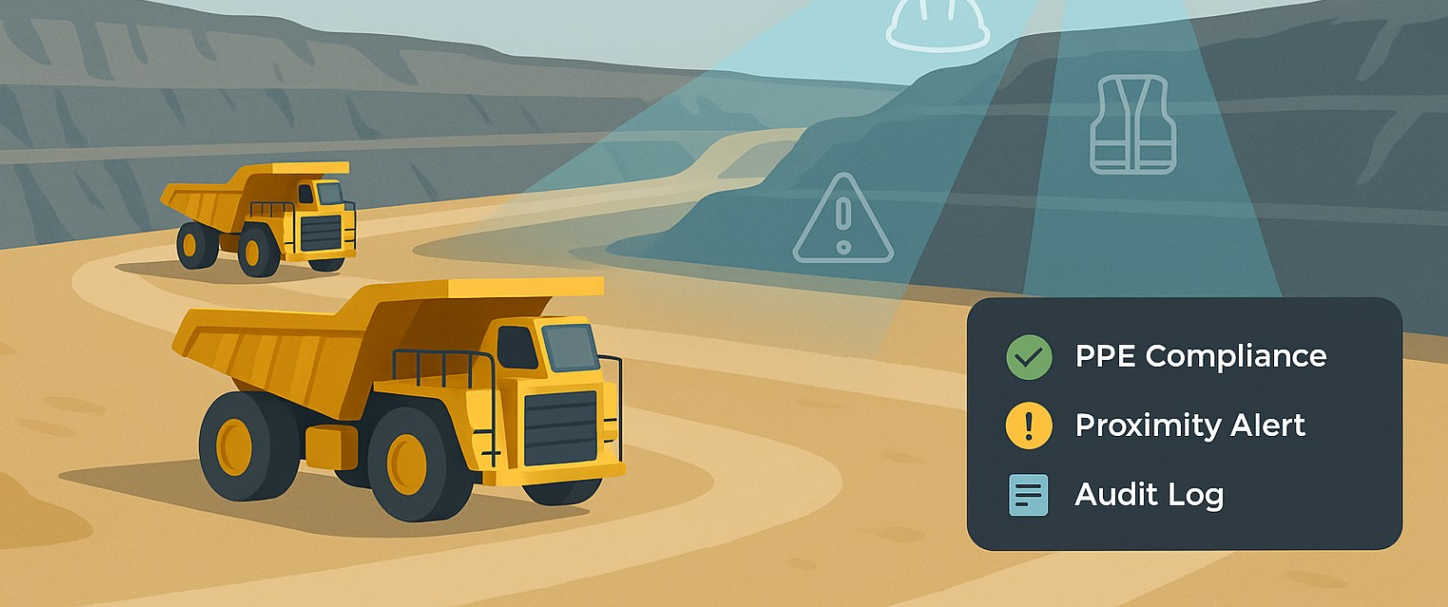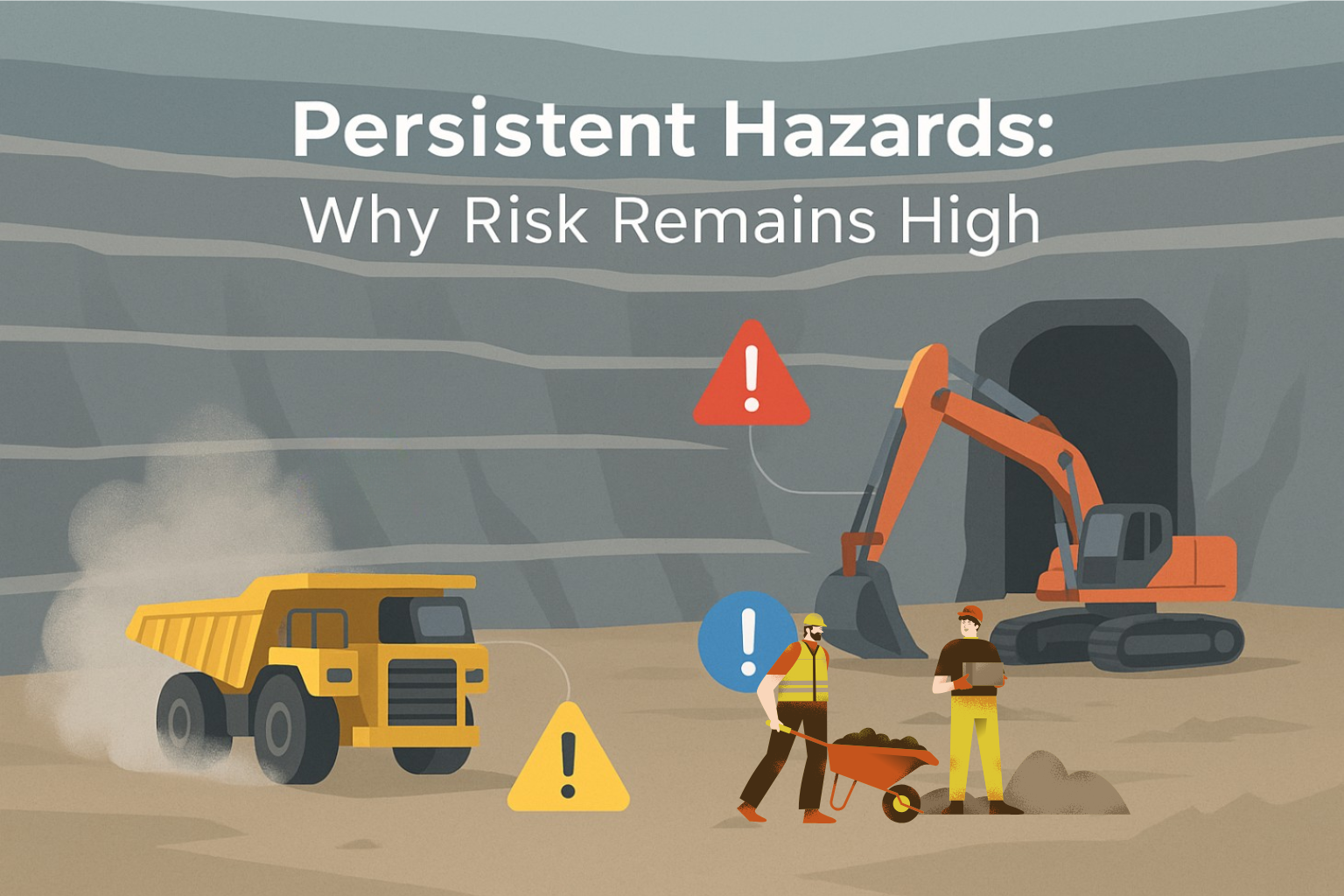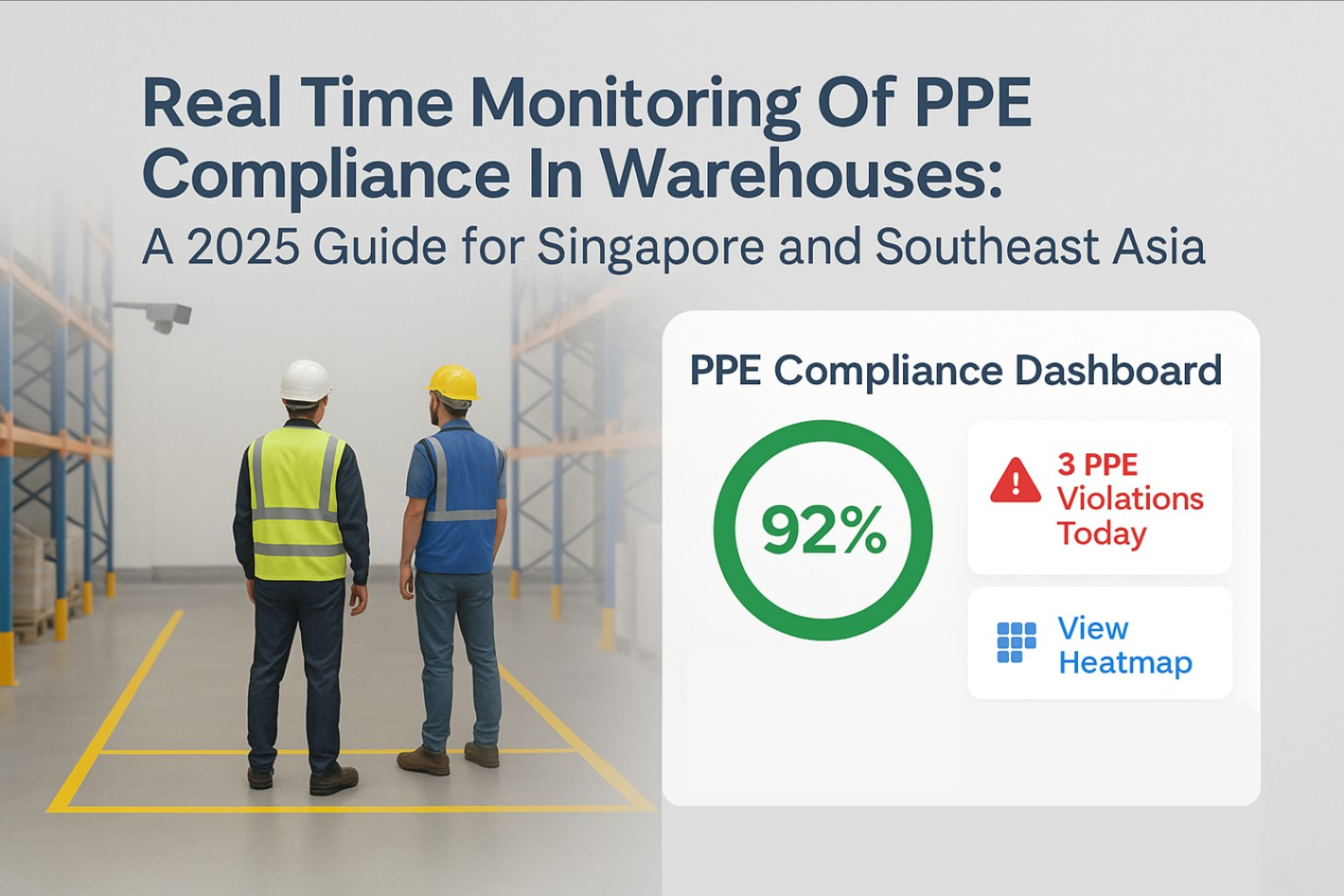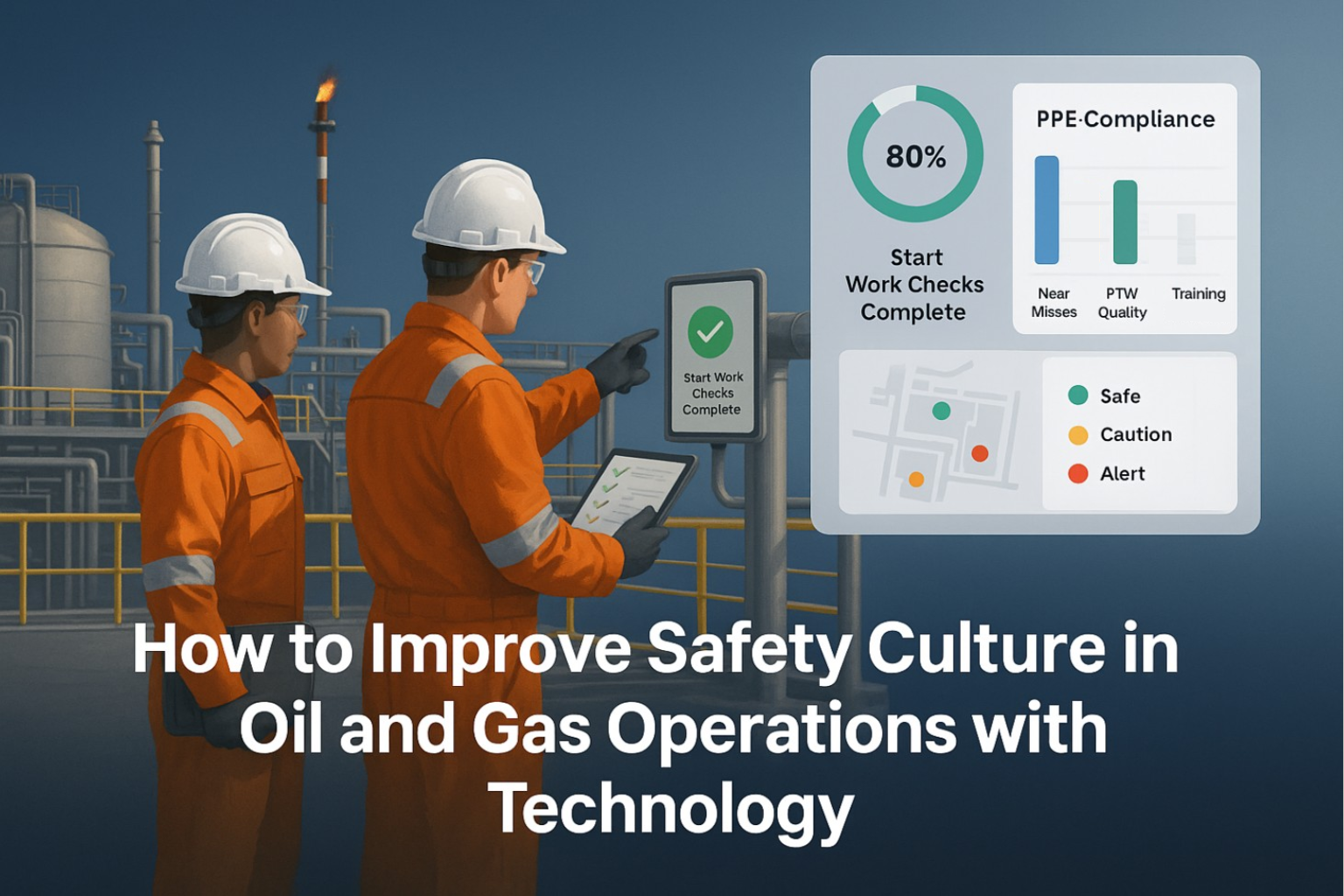Learn practical ways to reduce incident risk in mines through automated AI-based monitoring. This 2025 guide explains how continuous AI-powered CCTV detection improves safety, ensures compliance, and integrates seamlessly with existing systems like Invigilo’s SafeKey™.

Mining remains one of the most hazardous industries. Even with strict protocols, comprehensive training, and regular inspections, incident risk persists due to the sheer complexity of modern operations. Mines span large areas, visibility conditions vary by the hour, and crews move constantly between equipment zones and confined spaces. In this environment, sporadic patrols and manual watchkeeping are not enough.
That is why many operations are evaluating ways to reduce incident risk in mines through automated AI-based monitoring. By connecting artificial intelligence to existing CCTV infrastructure, mines can achieve continuous oversight of critical areas, detect unsafe behaviours as they occur, and create audit-ready records that reinforce a safety-first culture. This guide explains the 2024 - 2025 safety context, how automated AI systems change the game, and the exact steps to deploy them effectively without overpromising or overspending.
If you are weighing options for your site, explore how Invigilo’s SafeKey™ integrates with existing cameras and workflows through the Invigilo Solutions page.

Mining companies apply rigorous standards for training, access control, and equipment use. Yet, incident risk remains stubborn because the operating environment challenges human attention and procedural consistency.
Mines combine heavy mobile equipment, variable lighting, dust, vibration, and confined spaces. Hazard profiles shift through shifts and across zones. Even experienced teams can miss early warning signs when conditions change rapidly or visibility drops.
Safety officers and supervisors are diligent, but they are still human. Fatigue, distraction, and workload pressure contribute to lapses in observation. Intermittent inspections cannot guarantee the timely detection of unsafe proximity or PPE lapses.
Periodic patrols and spot checks leave blind windows between inspections. A great deal can happen in those gaps, especially near high-traffic intersections, loading areas, and maintenance bays.
Written rules and safety briefings do not always translate into consistent behaviour. As teams grow and contract, or when contractors rotate onto the site, adherence can vary by crew and shift.
The global context underscores the urgency. The International Council on Mining and Metals reported 42 fatalities among member companies in 2024, a second consecutive annual rise after 36 in 2023 and 33 in 2022. At a broader level, the International Labour Organisation (ILO) notes mining employs a small share of global workers, yet accounts for a disproportionate share of fatal injuries. These realities make a strong case for continuous, technology-assisted oversight.
Automated AI-based monitoring augments human vigilance with continuous, objective detection. It does not replace supervisors or trained spotters. Rather, it serves as a reliable, always-on layer that reduces reliance on chance observations.
AI never gets tired and never looks away. Integrated with your existing CCTV network through Invigilo’s SafeKey™, it observes entrances, haul roads, loading points, and restricted areas continuously, releasing human teams to focus on high-value interventions.
Within Invigilo’s confirmed scope, AI can identify PPE non-compliance, unsafe worker behaviour, and dangerous proximity to moving machinery or restricted zones. When the system flags a risk, supervisors receive timely alerts and can intervene before a near miss becomes an incident.
SafeKey™ is designed to connect to existing camera infrastructure. For sites with coverage gaps, Invigilo can install compatible cameras. This approach helps mines scale monitoring without disruptive refits.
Automated event logs and reports support investigations, toolbox talks, and regulatory audits. Consistent documentation also helps managers spot patterns, target additional training, and prioritise engineering controls.
For examples of integration and deployment considerations, see Invigilo’s articles on rollout and calibration in the Invigilo Blog.

PPE compliance is foundational, yet it is difficult to enforce consistently across large sites and variable conditions. AI can verify helmet and vest usage at access points and in active work zones. It can also spot behaviours that increase risk, such as climbing onto equipment without authorisation or standing within danger envelopes.
What does this change for supervisors:
People and heavy machines should never meet by accident. In practice, foot traffic and equipment can converge quickly in loading areas, around shovels, or along haul routes. AI can track distance thresholds and trigger alerts when a person or light vehicle moves too close to defined risk zones. This is especially valuable during shift changes and periods of congestion, when attention is divided.
What does this change for supervisors:
Manual logbooks are difficult to maintain and audit consistently. AI-generated incident and observation records provide time-stamped, searchable evidence for audits, insurance queries, and continuous improvement. Over time, this body of data helps leadership see where controls are effective and where more coaching or engineering changes are required.
What does this change for supervisors:
Buyers in 2025 face stronger scrutiny from boards, investors, and regulators. Safety performance is now tightly coupled with ESG expectations and social licence to operate. Several trends are shaping decisions:
Industry bodies and investors expect consistent, comparable reporting of safety data. ICMM’s transparent benchmarking shows that serious incidents remain a reality, and that continuous improvement is not optional.
Mining companies face complex reporting across multiple standards. Initiatives to harmonise reporting and raise the quality of disclosures are ongoing, which places a premium on reliable, audit-ready data pipelines from operations to disclosure.
Firms are shifting from programmatic safety campaigns to systems thinking. That means better hazard controls, reliable detection, and evidence-driven adjustments.
Automated AI-based monitoring aligns with these pressures by improving observation quality, tightening compliance, and building a defensible documentation trail.

Every serious incident carries direct and indirect costs. Direct costs include medical care, remediation, repair, and production interruptions. Indirect costs include investigations, legal exposure, reputational harm, and slower ramp-up as crews regain confidence. AI monitoring contributes to ROI through four levers:
Earlier detection of PPE issues or unsafe proximity prevents incidents that would otherwise trigger stoppages and disciplinary investigations.
Standardised records reduce time spent collecting evidence and responding to queries. This saves staff hours and reduces audit friction.
Evidence of recurring patterns allows managers to focus toolbox talks and coaching on what matters. Training resources are finite. Data ensures they are applied where risk is highest.
Crews value visible, consistent safety management. Confidence reduces turnover and supports stable productivity.
Where possible, keep ROI statements accurate and conservative. Use site-specific baselines and track leading indicators such as PPE compliance rate, restricted-zone breaches, and mean time to intervention. For an overview of safety themes and operational benefits, review the Invigilo Blog and align claims with what your site has verified.
Mistake 1: Treating AI as plug-and-play.
Every mine has unique lighting, dust levels, and traffic patterns. Skipping a thorough site survey leads to missed detections and false triggers.
Fix: Run a structured survey before go-live. Confirm camera locations, angles, and coverage. Identify backlighting and low-light areas. Plan for additional cameras where coverage is thin.
Mistake 2: Over-relying on automation without clear roles.
AI detects, but people must decide and act. If roles and escalation rules are unclear, alerts will be ignored or actioned inconsistently.
Fix: Define who acknowledges alerts, who investigates on site, and who closes the loop. Bake these steps into daily routines and shift handovers.
Mistake 3: Insufficient calibration and threshold tuning.
Default sensitivity may not suit your traffic density or lighting. Uncalibrated systems either miss events or generate noise.
Fix: Use a calibration period. Adjust thresholds by zone and shift, then review alert quality weekly until false positives are controlled and true positives are captured.
Mistake 4: Weak change management and training.
If supervisors and contractors do not understand why alerts are issued or how to respond, adoption will stall.
Fix: Provide short, role-specific training. Show examples of good responses. Include the system in toolbox talks. Recognise crews who demonstrate good alert response discipline.
Mistake 5: No feedback loop to engineering controls.
If alerts do not lead to permanent changes in layouts, signage, or procedures, you will fight the same fires repeatedly.
Fix: Use aggregated data to prioritise engineering and procedural fixes. Escalate recurring patterns to the safety committee and track corrective actions to closure.

List zones with the highest hazard density. Common examples include haul roads that intersect pedestrian routes, loading areas, crusher in-feeds, and maintenance bays. Prioritise the first tranche of coverage based on incident history and near-miss reports.
Work with Invigilo to connect SafeKey™ to your current cameras where feasible. For coverage gaps, plan new camera placements that respect lighting, dust, and vibration constraints.
Walk the route with safety and operations. Confirm angles, distance to targets, and cable runs or wireless links. Identify anti-vibration mounts and protection for housings where required.
Define what constitutes a restricted zone, which PPE types are mandatory, and which behaviours require intervention. Map alert routing to the right supervisors and radios so response is fast.
Run the system alongside normal operations. Review detections daily. Tune sensitivity for low-light and backlit scenes. Adjust for glare and dust where needed.
Provide short modules for supervisors, control room operators, and contractors. Explain what the system sees when it alerts, and what a good response looks like. Include the system in pre-starts and end-of-shift reviews.
Track PPE compliance rate, restricted-zone breaches, alert acknowledgement time, and intervention time. Use trends to focus coaching and to justify engineering changes.
Once the first tranche is stable, extend to secondary zones. Apply lessons learned from early deployments so each expansion is faster and cleaner.
If you want a practical discussion about coverage planning and calibration steps, reach out via the Invigilo Solutions page or explore deployment insights on the Invigilo Blog.
A: Yes. The strongest results come from combining AI with human judgment. AI provides continuous detection of PPE lapses, unsafe proximity, and similar behaviours. Supervisors then apply context, communicate with crews, and adjust controls. This partnership shortens the time between hazard and intervention.
A: Accuracy depends on site conditions and setup quality. Invigilo recommends a site survey and a calibration period to address blind spots, low-light areas, and glare. Tuning sensitivity by zone reduces false alerts while improving capture of true risks. Mine's should measure alert precision and response time as part of commissioning.
A: Timelines vary with site size and the state of the CCTV network. Integration with existing cameras shortens deployment. A focused risk map, pre-defined alert routing, and decisive internal ownership also save time. Many sites prefer phased rollouts that bring priority zones online first, then expand.
A: Budgets reflect the number of monitored zones, the condition of current cameras, and the complexity of connectivity. Savings accrue through fewer stoppages, faster audits, reduced time spent on manual observations, and more targeted training. The strongest business cases use baseline indicators such as PPE compliance, restricted-zone breaches, and mean time to intervention, then track improvements after go-live.
A: Yes. Automated logs and reports provide time-stamped evidence for audits, contractor reviews, and safety committees. Consistent documentation supports regulatory compliance and makes internal investigations faster and more reliable.
Mining will always involve significant risk. That does not mean incidents are inevitable. By adopting ways to reduce incident risk in mines through automated AI-based monitoring, operators can bring continuous oversight to the places where it matters most, intervene earlier, and build a culture that values consistent, visible controls.
Invigilo’s SafeKey™ integrates with existing CCTV networks, focuses on behavioural safety and compliance, and produces audit-ready records that align with the expectations of today’s stakeholders. If your operation is ready to move beyond sporadic checks and reactive measures, now is the time to explore a phased deployment.
Learn how Invigilo approaches mining and other high-risk sites on the Invigilo Solutions page and explore implementation insights on the Invigilo Blog.


A practical playbook that turns safety culture into repeatable behaviours. Pair IOGP Life-Saving Rules and Start Work Checks with AI vision on existing cameras, digital PTW, LoRaWAN sensors and digital twins; track a small set of leading indicators, run a four-week pilot, and scale with privacy-first governance.

Learn how to build a weekly safety dashboard from systems you already have, then layer AI video analytics on existing CCTV to quantify PPE and proximity risks by shift and zone. The article covers schema design, data contracts, quality checks, a practical pilot plan, and how to link improvements to reduced claims, downtime and penalties. Templates for ISO 45001 or OSHA exports and vendor validation steps are included.
Ready to elevate safety in your operations? Let’s talk!
Contact us today for a personalized demo.
